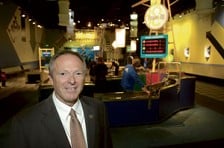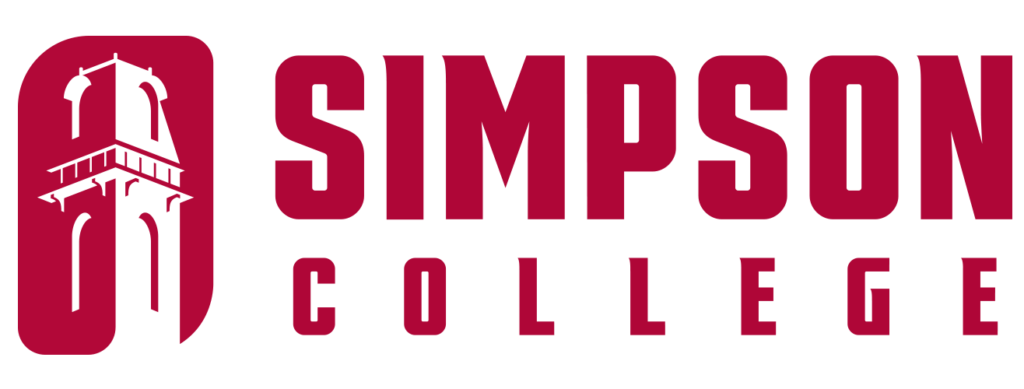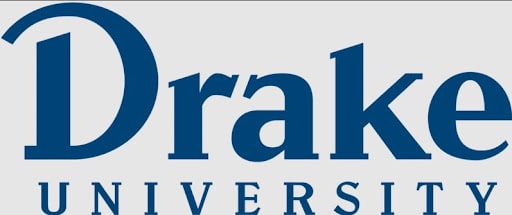Meet Jeff Weld

The issue: Educating Iowa’s workers
The number of science, mathematics, engineering and technology (STEM) jobs in the state is projected to increase by 16 percent between 2008 and 2018. But not enough qualified students are majoring in those subjects in college or going into those fields after graduation, officials say. Gov. Terry Branstad last year put together an advisory council of educators, business leaders and government officials in an effort to increase the number of students who are interested in getting into STEM-related fields. Jeff Weld was hired as the executive director of the initiative.
As Jeff Weld reflects on his journey from schoolteacher to director of a major STEM initiative, he relates it to the maxim of the child throwing beached starfish back into the ocean.
The maxim goes something like this: It seems insurmountable to help all the starfish washed up on the beach after a storm, but it’s easy to make a difference for individual starfish.
As a teacher, Weld was able to help a lot of individual students. He describes his 11-year stint as a high school teacher using words such as “wonderful, enriching, fulfilling.”
“But at this level,” says Weld, “you’re influencing the entire beach, and the tide. You can sway how we prepare teachers. Not only will that impact as many individuals as I was able to as a teacher, but I’ll impact systems of teaching. And the scale can be dizzying.”
The Governor’s STEM Advisory Council is off to a fast start. The state now has been divided into six regions, each with a hub designed to better focus on intiatives at a local level. The council has identified eight targeted priorities, each with dedicated working groups, and accumulated 19 recommendations for reforming Iowa’s STEM system. In early October, Weld and Lt. Gov. Kim Reynolds announced that more than 800 Iowa schools and community organizations will participate in “scale-up programs,” which means taking 12 programs that have worked in individual schools or counties and expanding them statewide.
“I can’t think of a single person who would be a better fit for serving as the executive director for the STEM Advisory Council,” said Gary Scholten, senior vice president and chief information officer at Principal Financial Group Inc. Scholten is a member of the advisory council.
“And the STEM efforts that Jeff is helping to lead have gained momentum since the STEM Advisory Council was formed last year,” he said. “Many other states are now looking to Iowa for best practices in STEM-related programs.”
Weld might be considered a bit of a STEM geek. As a biology teacher, he thought of himself as a STEM teacher first and foremost. During his final teaching stop in Pella, he found himself teaching by day at the high school and teaching night classes at both Central College and Des Moines Area Community College’s Newton campus. He was writing articles in educational magazines. A professor at Central recommended that Weld go back to school for his doctorate because “you eat, sleep and breath this stuff.”
“If I find myself looking around and asking ‘why?’ about a lot of things about education, I probably need to be in a system where I can influence and help direct the ‘why’ and ‘how’ and ‘what’ we do on a daily basis,” Weld said.
Weld went back to school, and eventually landed a teaching job at the University of Northern Iowa. In 2007, the Iowa Board of Regents created an initiative among the three state universities called the Iowa Mathematics and Science Education Partnership, and Weld was appointed director of the program.
In that job, he was charged with creating more STEM teachers, offering more enrichment programming and making sure all the key players in STEM were working together. In five years, Weld said, all three of those things happened. It culminated in getting colleges, K-12 schools and the private sector producing a STEM road map that was presented to Gov. Branstad in 2011, leading to the advisory council.
Weld said Iowa modeled the program loosely on one in Massachusetts. Now Iowa is, by and large, leading the country in statewide STEM initiatives. He credits the Iowa Legislature for committing $4.7 million to the STEM initiative.
Now Weld is seeking more business involvement, from individual companies to organizations such as the Iowa Business Council.
He recalls a summit in January where he asked business people, “What do we have to do?” The answer was to “get a structure.”
“Well, now I can say, ‘Here, we’ve done it. … Now we really need your help,’” Weld said.
What would make the STEM initiative a success? There’s 25 different metrics, Weld said, but from a business standpoint, the answer would be “dramatically” reinforcing Iowa’s workforce talent pool in those fields. And from a quality-of-life standpoint, making sure that the state’s younger adults have a good grasp on how those fields affect their world.
“Those are my two biggies: workforce readiness, inextricably tied to quality of life, and STEM-literate citizenry,” Weld said. “Would that not be great?”
Q&A
What is the biggest challenge you have overcome?
Related to the state’s STEM initiative, the biggest challenge I have overcome is impatience to solve this – like, yesterday. For long-lasting and sustainable solutions in STEM, we’ve methodically built a broad and deep alliance of partners across the business and education spectrum, and that takes time. I now practice strategic impatience, a term credited to Adm. Hyman Rickover. That’s enabled us to move forward swiftly, knowing that each year matters in the lives of countless kids. Luckily our STEM Council is populated and chaired by strategically impatient people too.
What is your guiding principle?
Related to the state’s STEM initiative, my guiding principle persists from my days as a Boy Scout: Leave the campground better than you found it. There’s been quality STEM in pockets of Iowa for a long time, and good things will continue to exist long after I and the council fade. But while I’m in the mix executing the wishes of this STEM council, the intention is to bring value to the STEM scene such that things will be much better for learners, educators, employers and communities across Iowa as a result.
What would you consider your biggest success?
Again, as related to the STEM initiative, my greatest accomplishment to date is having a hand in unifying the ample talents of our state in the singular mission of excellent STEM for all. The remarkable alignment of our legislators, business leaders and educators, from toddler to tassel, around the common cause of STEM has been a great study in leadership starting with our governor and lieutenant governor. I probably figure in there somewhere too.









